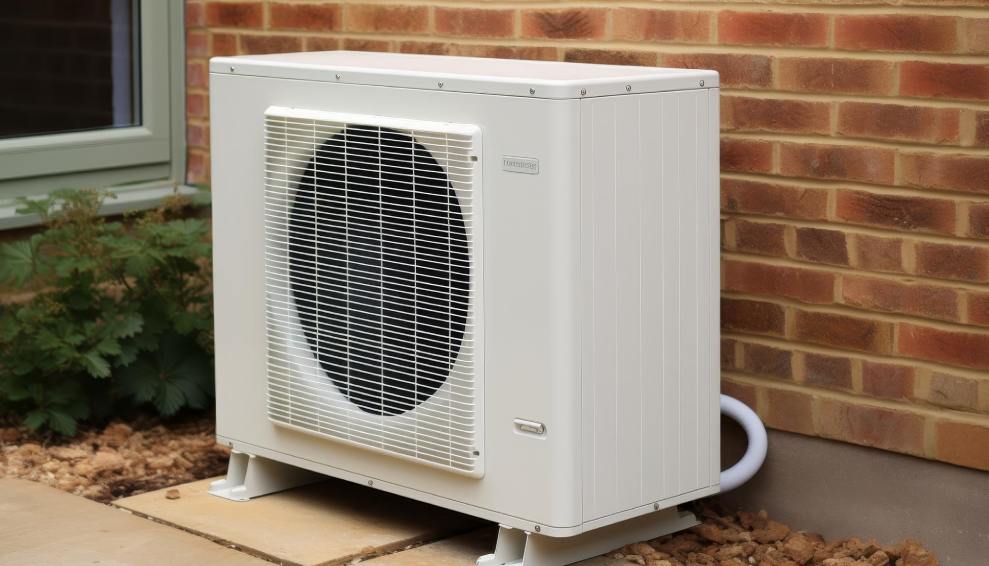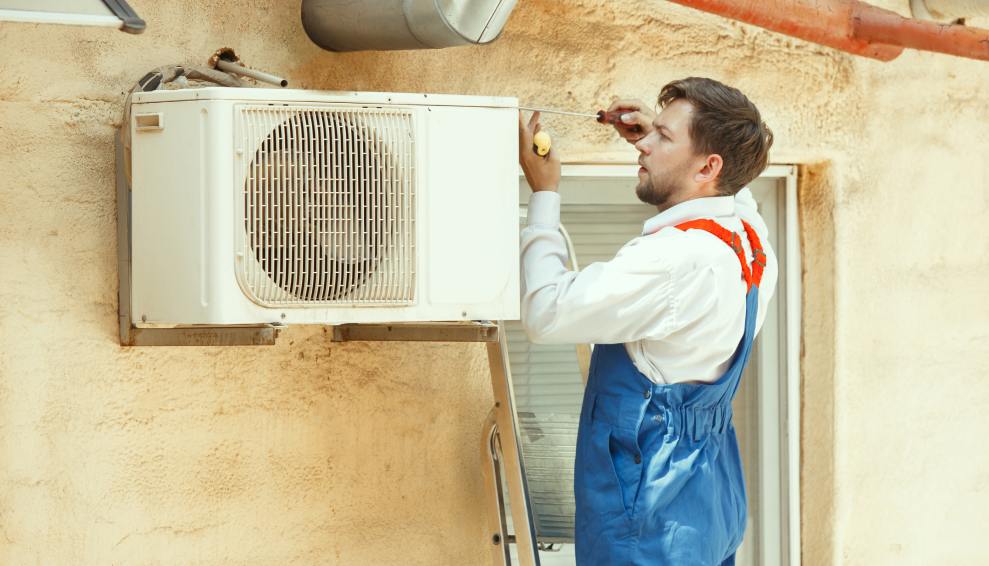Heat pumps serve dual purposes. They heat the home when it is cold outside and cool it when the temperature rises. These units are energy efficient and good for the environment because they don’t burn fuel. However, the homeowner needs to ensure they get the correct unit for the home.
The Concept Of A Heat Pump

The heat pumps are becoming more and more popular these days. If you still don’t know about them and are trying to look for more information before buying a heat pump for your house, then you have landed yourself on the right page.
An electric air source heat pump is an outdoor unit. You can use this unit to keep your home both heat as well as cool your home. This totally depends on the weather.
The heat pumps are a great alternative to your central air conditioner or your furnace systems. This technology is specifically used in a refrigerator or an air conditioner. The unit extracts heat from a specific source.
It can be from the surrounding air, nearby sources of water, or eleven geothermal energy. Once it is done collecting the heat, it further amplifies it and then transfers it to the space where it is necessary.
How Do Heat Pumps Work?

Most heat pumps pull heat from the air and move it to the desired location. When heating the home, the unit takes the hot air from outside and brings it indoors. When cooling the house, the unit removes hot air from the home and transfers it outside.
They use less carbon than other heating options and work best when set at a consistent temperature. To see the optimal results, homeowners must ensure their houses are properly insulated and sealed. What else should they know before requesting a heat pump installation?
Heat Pump Options
Air-to-air heat pumps are the most common air-source heat pumps used in America today. They come in two forms.
Ducted air-source heat pumps function like central AC units. Treated air is distributed throughout the home with the help of ductwork.
Ductless or mini-split air-source heat pumps are the second option, increasing in popularity. No ductwork is needed when a homeowner selects this option. However, other options exist.
Geothermal heat pumps pull heat from the ground to warm a home and release heat into the ground to cool the house.
These systems are highly efficient, but they often cost more to install. Water-source heat pumps are similar to ground-source units but are installed at the bottom of a pond. Air-to-water heat pumps use a hot-water radiator system to distribute heat throughout the home.
The Benefits of Heat Pumps

Heat pumps are easy to install and work in most homes. The mini-split system is ideal for those without ductwork because the house won’t have to be modified during installation.
Moving to a heat pump will significantly reduce the owner’s carbon footprint, and many areas offer subsidies for those who choose to upgrade to this type of unit.
Let’s learn about the benefits of the best heat pump:
Energy Efficiency
Many users have agreed that heat pumps show more efficiency than all traditional furnaces. These heat pumps help to move the heat from the outside air or ground into your home.
As a result, you can easily save a lot of money on the overall energy bills.
Improved Air Quality
The heat pumps can both filter and then deodorize the air. This helps you to reduce allergies as well as asthma.
Quiet Operation
The heat pumps are an excellent choice for your home and businesses as they generate less noise and are typically quieter than the other systems.
Easy Maintenance Process
The heat pumps do not require much attention and are very simple to manage. It does not need regular servicing.
P.S. Heat pumps can be expensive, and you may face difficulties installing the system. Otherwise, the system and its benefits make it a perfect long-term investment.
When Not to Install Heat Pump?

A poorly insulated home or a leaky one will not benefit from a heat pump because drafts and cold spots are often an issue.
Homeowners must research their electrical service to ensure it can handle the heat pump load, as upgrading the electrical system to install this unit will add to the cost.
Finally, individuals in cold climates may find their heat pumps cannot keep up. The Department of Energy has established eight climate zones for the United States. In zones 7 and 8, homeowners need to consider other options.
Choosing a Heat Pump
Homeowners must consider several factors when choosing a heat pump. You must consider the size and capacity of your space. If you fail to choose the best heat pump of the proper size, it will cost more to run. Moreover, it won’t keep the home at the desired temperature.
The determination of the right size heat pump involves two kinds of measurements:
1. Manual J Load calculation
HVAC technicians widely use this specific kind of calculation. They consider certain factors that help them to understand how much heating and cooling your home needs before choosing the best heat pump. These factors are as follows:
- The square footage measurement of your home
- Ceiling height
- Insulation of your house
- The climate type and the number of days you might need the heating or cooling
- How often the space is being used?
- The number of people who use the space
- The total number of heat-producing appliances that you have in your room
- Number of windows and doors.
The technicians consider these values and further enter them into a formula to get the precise result.
2. Square Footage Calculation
The calculator might seem a bit simpler, but it is not precise enough to calculate the required heat pump capacity.
For instance, if your total house space is around 1500 square feet, then you would need a 3-ton unit. BTUs, or British Thermal units further measure these ton units.
An experienced technician can help the homeowner determine the BTUs needed for the house.
| Home size (sq. ft.) | Size of the heat pump (in tons) | Size of the heat pump (in BTUs) |
| 500 sq. ft. | 1-ton | 12000 BTUs. |
| 1500 sq. ft. | 3-ton | 36,000 BTUs |
| 2500 sq. ft. | 5-ton | 60,000 BTUs |
Apart from these calculations, compressor type is important when choosing the best heat pump. Most homeowners choose a variable-speed compressor, which automatically adjusts to maintain the selected temperature.
Efficiency is also a consideration when choosing the best heat pump. Look for a high SEER rating to save on energy bills.
Learn about each unit’s climate performance and research the noise level. Finally, the reliability of each unit must be considered to ensure the heat pump will work when needed.
Once a heat pump has been selected, choose a contractor. Ensure they are trained to handle this task and have been in business for a while.
Doing so ensures best heat pump will be installed correctly, and help will be available if problems arise. When homeowners take these steps, they will have peace of mind knowing their unit will work when needed.
Additional Reading:






















